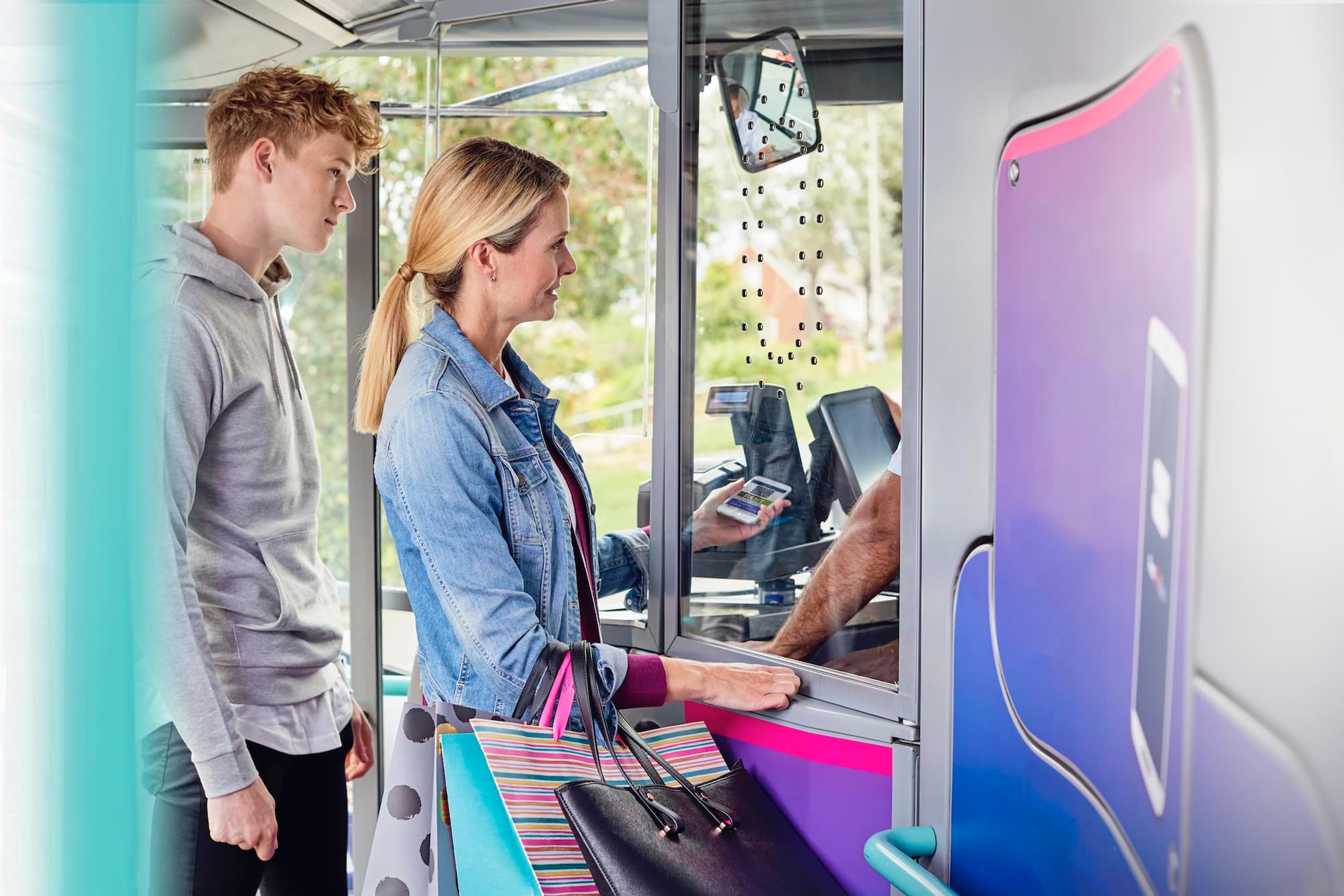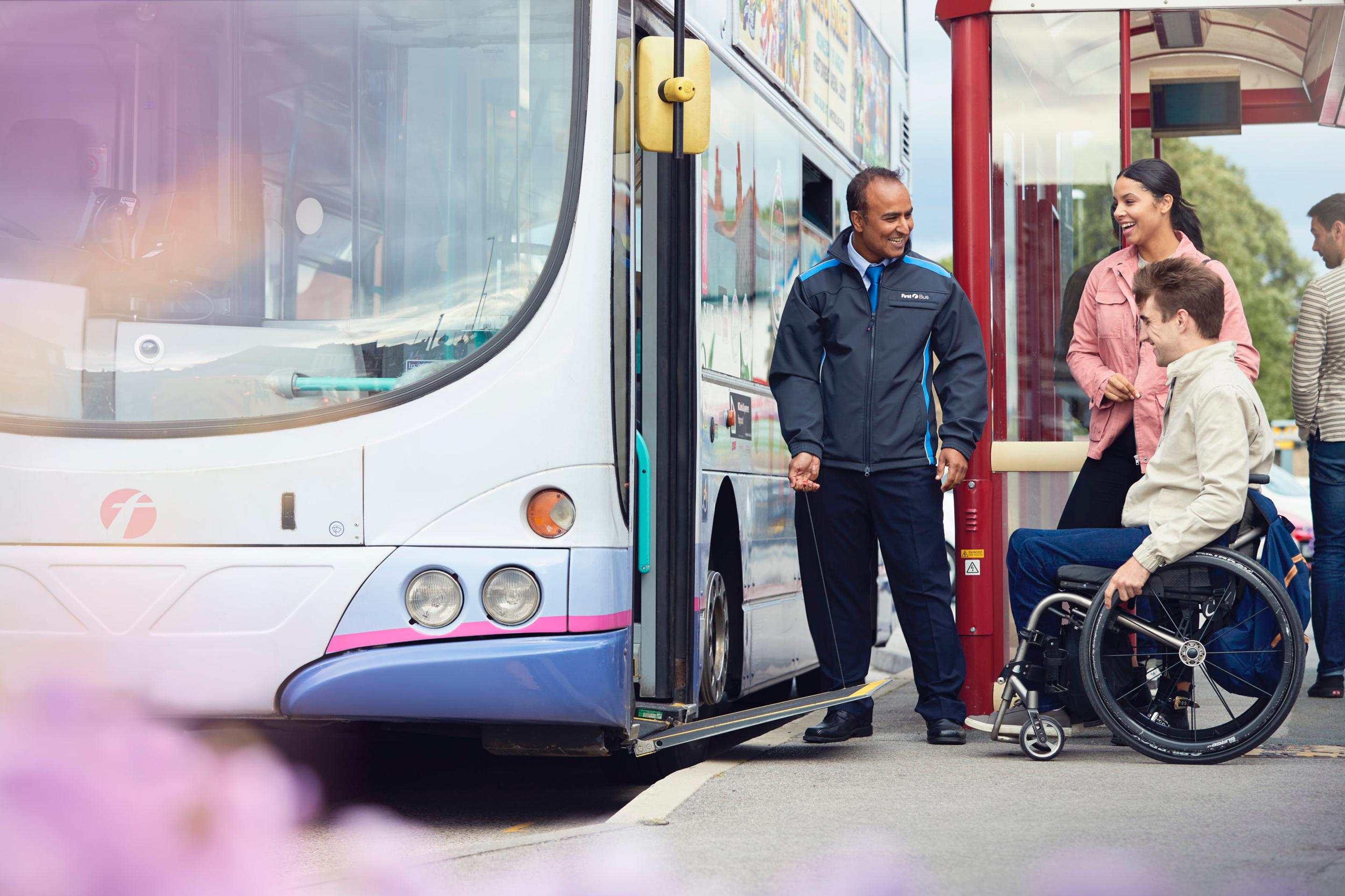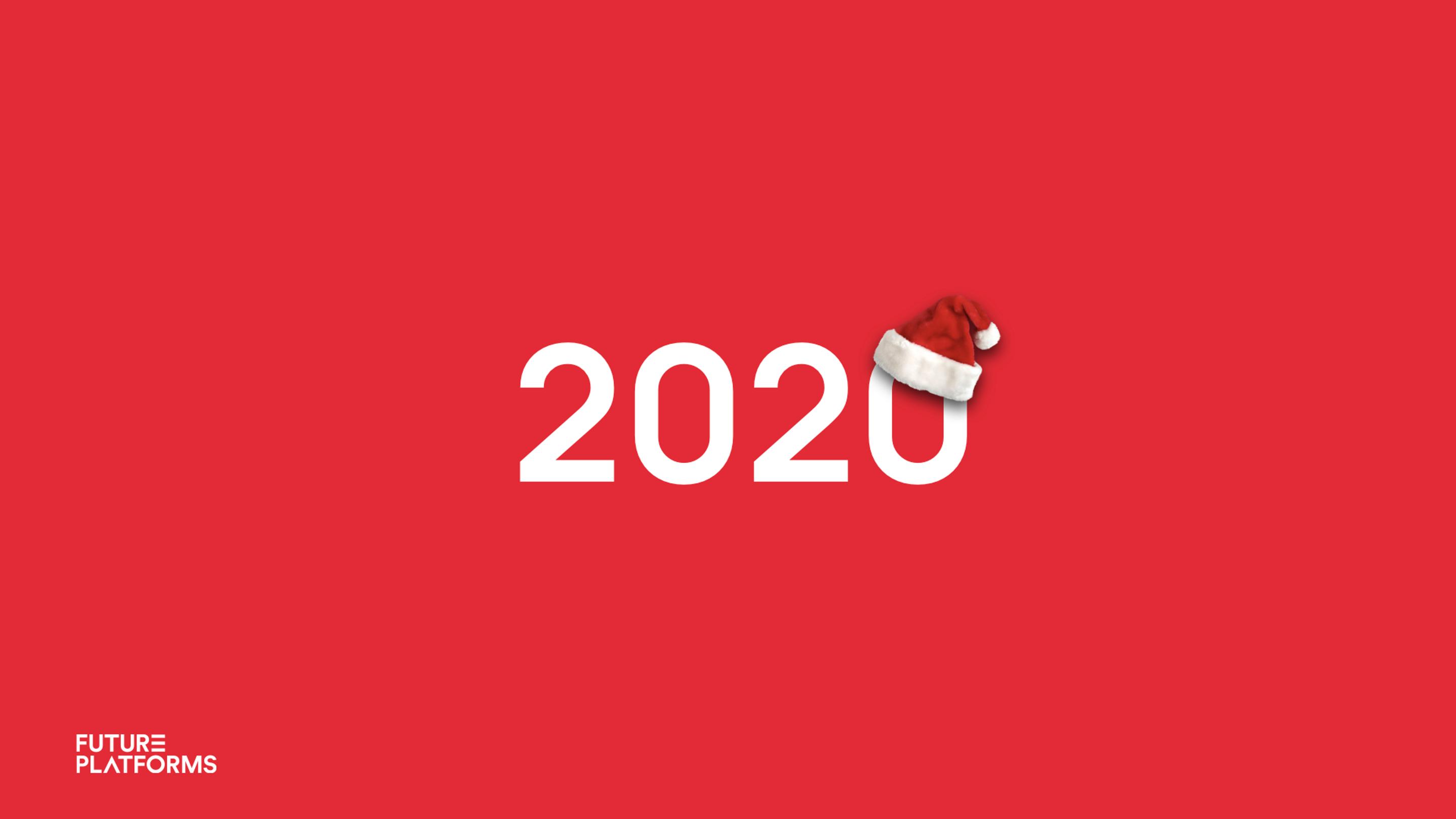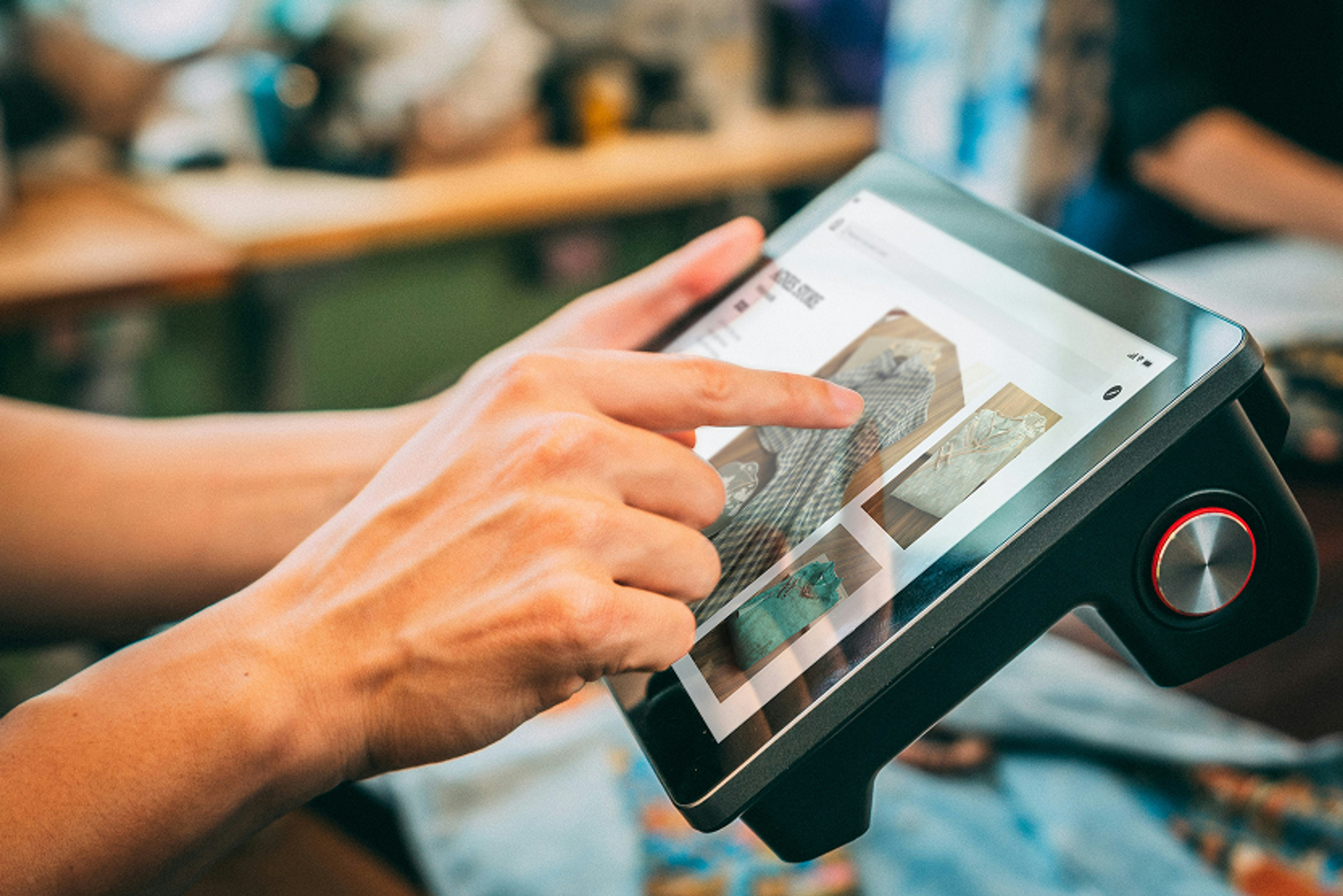MaaS and the Evolution of Transport: Exclusive Interview with Martin Bould, First Bus

Over the last decade, advancements in technology have started to shape how transport is used and delivered.
Traditionally, the transport industry has been slower to embrace new and innovative technologies to enhance customer experience, falling behind industries like telecommunications and retail.
The introduction of more disruptive on-demand and city-transit apps, such as CityMapper and Uber, has led to service providers embracing new technologies in order to stay in the competition.
First Bus, one of the UK’s leading transport providers, is one business that has been reconsidering how its service is delivered. Led by Chief Commercial Officer Martin Bould, First Bus has been steadily preparing for the journey ahead.
Coming from a background in telecoms, where he spent 14 years with Vodafone and O2, Bould recognised that the transport industry was behind when it came to utilising cutting-edge technology to provide a seamless customer experience.
The movement and demand for mobility-as-a-service (MaaS) is helping service providers, like First Bus, catch up with other industries and innovative competitors. MaaS is one of the most pivotal changes to the transport landscape we have seen so far. To understand its challenges and opportunities, we interviewed Bould to get his expert opinion on the impact of MaaS on the transport sector.
Defining MaaS
MaaS, in its purest form, is when a provider integrates with various forms of transport options and combines them into a single service or application. Whereas now, a provider might favour one mode of transport – for example, First Bus encourages commuters to take one of its busses and Uber encourages users to pay for a car – a MaaS operator shows every available option. Commuters are then able to choose their route and complete their journey in the quickest, most cost-effective way.
“To meet a customer’s request, a MaaS operator facilitates a diverse menu of transport options; be they public transport, car hire, e-scooters, ride-share, bike-share, taxi, or a combination thereof.”
The purpose of MaaS is to provide a one-stop-shop for the customer, from trip research, to planning, to buying. It’s all about simplicity and getting from A-Z in the most intuitive, straightforward way.
“[MaaS should] solve the most inconvenient parts of individual journeys, as well as the entire system of mobility services,” says Bould.
This doesn’t necessarily provide a complete alternative to public or private transport but rather, they work in tandem. For example, in a MaaS solution, car services like Uber could be used in conjunction with public transport.
MaaS works towards offering the most convenient “first-mile, last-mile” travel, meeting the needs of those whose times don’t match up with fixed schedules, who aren’t in high-coverage areas, or who must walk or drive to get to their nearest station. It opens up options for those who would normally use their own vehicles out of convenience. This has a positive environmental impact as well – if more people leave their cars at home, roadway congestion is eased and it could help reduce local carbon emissions.
MaaS picks up speed
“Smartphone penetration, app usage, high availability of 4/5G, WiFi, and open access to data (including location-based data), makes MaaS all the more a possibility,” says Bould.
However, Bould stresses that customers now have more choice than ever with multiple operators and modes to choose from, and this can add pressure on service providers.
Journey-planning apps have altered customer preferences and expectations. For example, commuters are able to get a door-to-door view of their entire journey using the app, and they have come to expect this kind of convenience and transparency from all transport service providers.

“[Without addressing this demand], there is a danger that the transportation company just becomes the metal box with the wheels, which erodes the value of the brand.”
Bould has already seen how relationships are formed with CityMapper, Uber, and other journey-planning apps. The fact that these services have started to play in the public transport space has added challenges.
CityMapper, for example, has experimented with its own bus service, Smart Bus, (which was unsuccessful), and Uber added real-time public transport data to its app (which still encourages users to pay for a car, rather than hop on a bus).
“Customers have more choice than ever with multiple operators and modes to choose from.”
Bould’s biggest concern has become about owning the customer relationship. Retaining the customer relationship requires operators to innovate and address customer pain-points before they turn to someone else.
This is why MaaS has the transport industry so excited. It will allow service providers to fight back with emerging competition and create that one-stop-shop for passengers.
First Bus is already challenging the threat posed by services like CityMapper through its own successful app, which gives users details about their entire journey, from start to finish. Users are able to plan their journey and purchase their tickets all from the one app. The First Bus app is considered best in class and boasts an impressive 4.6-star rating on the App Store.
Through its app, First Bus becomes the ticket agent as well as the transport provider, managing all the travel needs of commuters in the smartest, most seamless way possible. This, however, doesn’t come without its challenges.
Challenges of MaaS
“It may change the provider relationship to some degree and innovate new demand-responsive models to launch – small vehicles, new routes, and demand-based rather than fixed timetables. The bigger challenge and likely change will be the ownership of the customer – who sells the ticket and therefore how commercial models are structured.”
The entire customer experience will need to become seamless and intuitive to navigate. To achieve this, the information has to be accurate.
“Presentation of the vehicle and where it is has to be right; information has to be accurate, and it needs to be in real-time,” explains Bould.
With public and private companies teaming up and working together to provide a seamless customer experience, it will be easier to achieve this.
As well as connectivity, MaaS providers also need to keep in mind those that may not have capabilities to pay digitally.
Although transport has advanced and made commuting easier and more accessible for most, there is still a way to go before MaaS, in its pure form, becomes a reality.
What impacts will it have?
“For the user, of course, the opportunity is simplicity and potentially better value as they search out optimum pricing options for their journey. They can plan journeys and set criteria to match their needs – including time, comfort, price mode, etc. and be presented with multiple options,” explains Bould.
For commuters, the biggest benefits and opportunities presented by MaaS is to unlock multiple services for transport. Previously, commuters would be limited to where they can get by predetermined bus and rail routes. With MaaS, they have the option to take a bus, then a bike, then an Uber, and reach destinations they previously may not have been to without great effort or cost.
MaaS is also able to meet commuters’ needs at an individual level. The technology builds more intuitively over time, learning from your previous behaviour and optimising your journey to your specific preferences. If, as a commuter you always skip cycle suggestions, then the next time you look at your journey options, the app may not suggest cycle hire. This strengthens customer experiences and their overall relationship with transport providers.
First Bus is working in partnership with Future Platforms to invest in technology that makes travelling frictionless for commuters. The latest updates added to the First Bus passenger app include first-of-its-kind technology (for UK bus operators) to address passenger safety during COVID-19.





